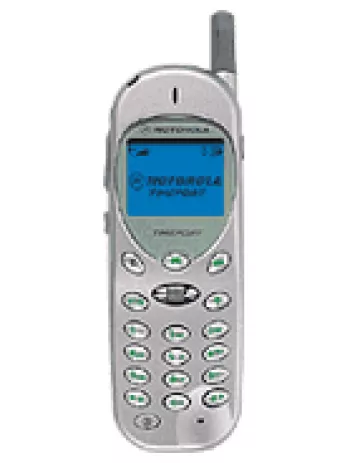
Overview of Motorola V1000
The Motorola V1000 was announced in the first quarter of 2004 but unfortunately, the project was cancelled before it hit the market. Despite its cancellation, the device had some notable features and an interesting design that would have made it a competitive choice in its time. It was conceptualized as a feature phone with a compact form factor and was set to incorporate an early version of smartphone functionalities. Below, we'll explore its features, design, and potential impact on the mobile industry, had it been released.
Design and Build
The body of the Motorola V1000 was expected to be sleek and lightweight. It was designed with dimensions described as 100 cc and weighed just 91 g (3.21 oz), which would have made it very easy to carry around. The phone was built to accommodate a Mini-SIM and had a silver color aesthetic. Motorola aimed to combine practicality with style, ensuring the phone was eye-catching yet functional.
Display
The Motorola V1000 featured a 2.2-inch LCD screen with a resolution of 240 x 320 pixels and a density of approximately 182 ppi. This provided an average display quality suitable for the early 2000s. The screen was capable of displaying 256K colors, which was quite substantial for mobile phones at that time and allowed for a vividly colorful interface.
Camera
One of the primary features was its 1.3 MP main camera, a decent offering for its era, and allowed users to take basic photos. However, it lacked video capability. The phone also included a selfie camera. In an age before the smartphone camera boom, this addition might have appealed to consumers looking for basic photography features.
Network and Connectivity
The Motorola V1000 was built to operate on GSM and UMTS networks, with specific support for GSM 900/1800/1900 and UMTS 2100 bands. Data speeds up to 384 kbps would have been accessible, allowing for basic internet browsing. Connectivity options included Bluetooth for wireless transfers and an infrared port, which at the time was a popular method for transferring files between devices. Interestingly, the phone also came equipped with GPS and A-GPS capabilities, which anticipated the growing importance of location-based services.
Memory and Storage
The Motorola V1000 included a dedicated slot for a microSD card, allowing users to expand the phone’s storage capacity. This added flexibility for users to store more photos, SMS messages, and perhaps some multimedia content. The phonebook supported photo call capabilities, providing a primitive yet effective way to personalize the calling experience.
Messaging and Features
The phone supported a variety of messaging options, including SMS, EMS, MMS, email, and instant messaging, catering to a broad range of communication preferences. Additionally, it was equipped with a WAP 2.0/xHTML browser for limited internet browsing. Gaming features were included, suggesting a focus on basic entertainment options. Java support was also present, which meant users could potentially download small applications to enhance the phone’s functionality.
Audio and Multimedia
On the sound front, the device was anticipated to have a loudspeaker and allowed for vibration alerts alongside polyphonic and MP3 ringtones. However, it lacked a 3.5mm jack, which might have limited audio accessory use. The lack of radio capability was a minor setback for users looking for diverse multimedia options, but its MP3 ringtone capability hinted at an early recognition of customizable audio experiences.
Battery Life
The phone was designed to feature a removable Li-Ion battery—a standard at the time—ensuring that users could swap out the battery as needed, which added to the device's longevity. However, specific battery capacities and usages were not detailed, but the removable design indicated user-centric flexibility.
Impact and Legacy
While officially cancelled, the anticipation and design of the Motorola V1000 highlighted several trends in early mobile technology development. Its features emphasized connectivity, fundamental multimedia capabilities, and a move towards more compact and feature-rich mobile communication devices. Although it never reached consumer hands, the V1000 undoubtedly contributed to Motorola's legacy in inspiring subsequent models and reflecting early 2000s mobile innovation aims.
Key Features of Motorola V1000
- Supports GSM and UMTS network technologies.
- Provides 2G and 3G connectivity with speeds up to 384 kbps.
- Compact and lightweight design, weighing only 91 g (3.21 oz).
- 2.2-inch LCD display capable of showing 256K colors with a resolution of 240 x 320 pixels.
- Expandable memory with a dedicated microSD card slot.
- 1.3 MP main camera for capturing photos.
- Equipped with Bluetooth connectivity and infrared port for easy data transfer.
- Offers messaging capabilities including SMS, EMS, MMS, Email, and Instant Messaging.
- Includes GPS and A-GPS for location tracking.
- Removable Li-Ion battery for easy battery replacement.
- Available in a stylish silver color.
Disadvantages of Motorola V1000
- The device was announced in 2004 but was cancelled, so it was never released to the market.
- Lacks video recording capability on the main camera.
- No 3.5mm headphone jack, limiting standard headphone connectivity.
- Absence of built-in WLAN, which limits wireless internet connectivity.
- No radio functionality available.
- No detailed information available about built-in sensors.
- Limited call record storage (only 10 dialed, 10 received, and 10 missed calls).
- Low display pixel density (~182 ppi), which may affect display sharpness.

View Also
More Phones
All Rights Reserved +14266 Phones © Mobilawy 2025

























